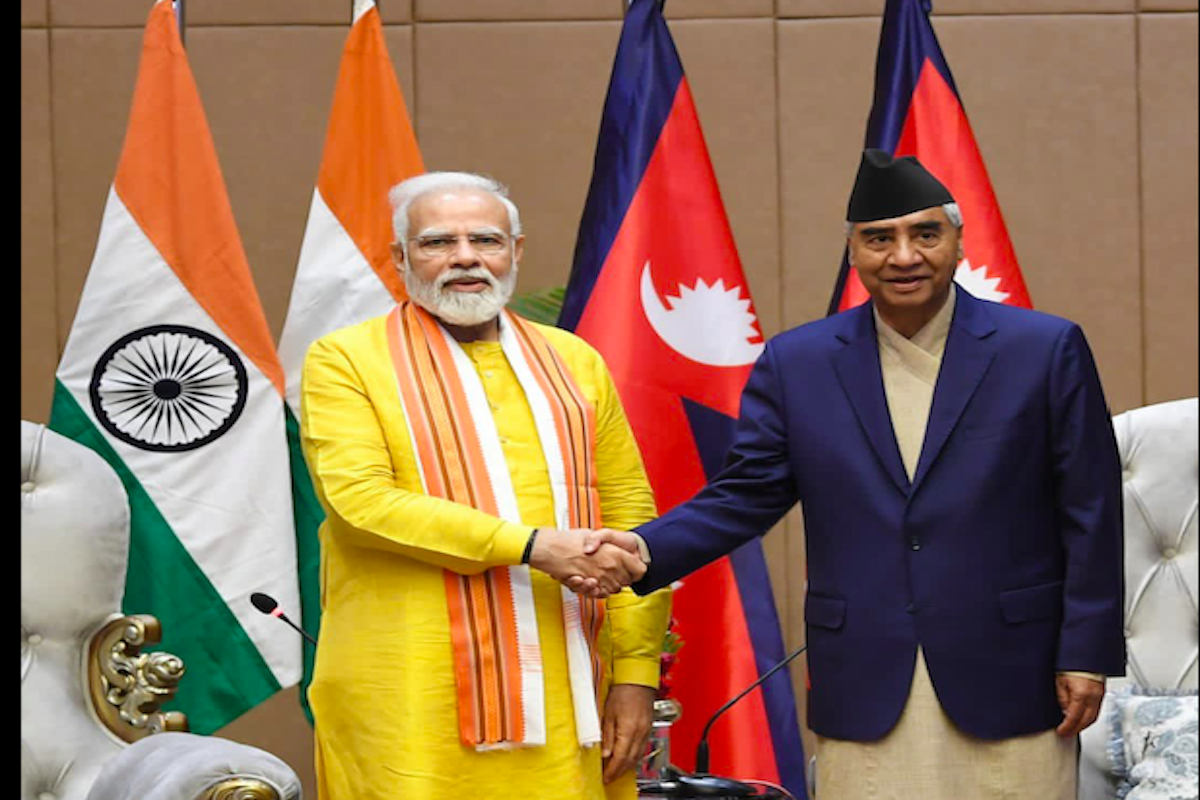Getting India-Nepal ties back on an even keel is perhaps the most urgent task for the Indian foreign policy establishment in the neighbourhood. Prime Minister Narendra Modi’s visit to Lumbini ~ his fifth journey to the country since coming to power in 2014 ~ which followed his counterpart Prime Minister Sher Bahadur Deuba’s visit to India in April 2022, is evidence that South Block is aware of the need to prioritise New Delhi’s relationship with Kathmandu. The Modi Administration’s outreach to Nepal, while it focuses as it should on strengthening civilisational links and fostering closer economic relations with its neighbour, is also a manifestation of the effort to try and mitigate the damage done to the bilateral relationship by the erstwhile China-friendly KP Oli administration in Nepal which in June 2020 introduced and got passed in parliament a Bill to issue a new map of the country including Indian territory claimed by Kathmandu. Nepalese nationalism, which often takes the form of India-bashing, ensured the Opposition could not afford to oppose the Bill while privately telling Indian interlocutors that the Oli regime was making a mess of bilateral ties. The fact, however, remains that Nepal’s Constitution now formally includes Indian territory in the Kalapani, Lipulekh, and Limpiyadhura regions as an integral part of that country. Comparisons were drawn in Nepali media at the time between the Oli government’s move and the Indian parliament’s resolution on Pakistan-occupied Kashmir (PoK) recognising it as an inalienable part of India. Subsequently, a combination of the Covid-19 pandemic and the Beijing- influenced policies of the previous regime in Nepal ensured that in fiscal 2020-21 Indian exports to Nepal fell by 5.51 per cent and Nepal’s exports to India clocked a negative growth of 5.80 per cent.
The good news, however, is that the approach adopted by India has been extremely pragmatic as evidenced by its continued engagement with Nepal. While the elephant in the room remains the territorial issue, New Delhi has sensibly assessed that Kathmandu is in no mood~or position~to move on it or even speak of it loudly unless bilateral relations slide back to the depths of the Oli-era. This is why led by its political leadership, India is doing all it can to ensure a win-win situation for both nations. An agreement for joint development of a 490 MW hydropower project, Arun-4, worth Rs 4,900 crore in Nepal, India okaying the export of over 350 MW of power from Nepal to India, and efforts to expedite the operationalisation of the 5,600 MW Pancheshwar dam envisaged to ensure water supply for Nepal during the lean season, are all steps in that direction. Indian companies, which account for approximately $600 million worth of investment in Nepal, are looking keenly at mutually beneficial sectors such as medicinal plants, pharmaceuticals and vehicle assembly to up their investments, say experts. Enhanced connectivity, with the first cross-border passenger railway service connecting India and Nepal, flagged off during Mr Deuba’s visit to India and bilateral cooperation in civil aviation to facilitate air traffic between the two countries having been formalised, is expected to be the gamechanger going forward.
Advertisement









